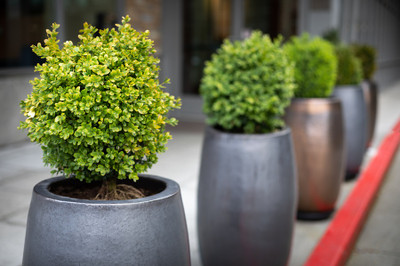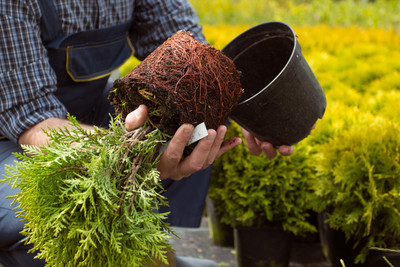Using a Planter as a Room Divider
Posted by Jason Wyrwicz on Apr 18th 2024
Using a planter as a room divider can be beneficial. There are many different ways that you can use them to accomplish your desired effect. Below, we’ll discuss some of the many aspects related to using planters as a room divider, including how planters can be advantageous and which plants to use.
Choosing the Optimal Room Dividers Using Planters
With so many different types of planters to choose from, it can be difficult to choose the correct variety for your specific commercial space. Let’s take a closer look at where to use some of the different types of planters for the best results.
Planter Sizes
First, you’ll want to consider the different size options.
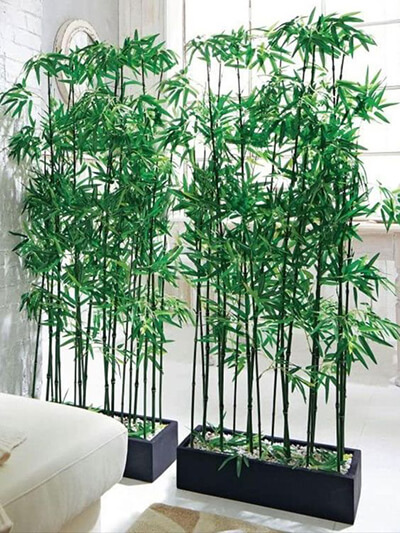
Short options, like our low-profile planter boxes, are ideal for creating some division of spaces. They’re especially good for situating on top of counters, tables, desks, and other elevated objects to help foster a sense of privacy.
Long, rectangular planters, like our modern rectangular planters, are the ideal substitute for traditional walls and drywalls. They help to create the same visual screening and sense of security but are a lot more versatile and can easily be moved to arrange the space differently.
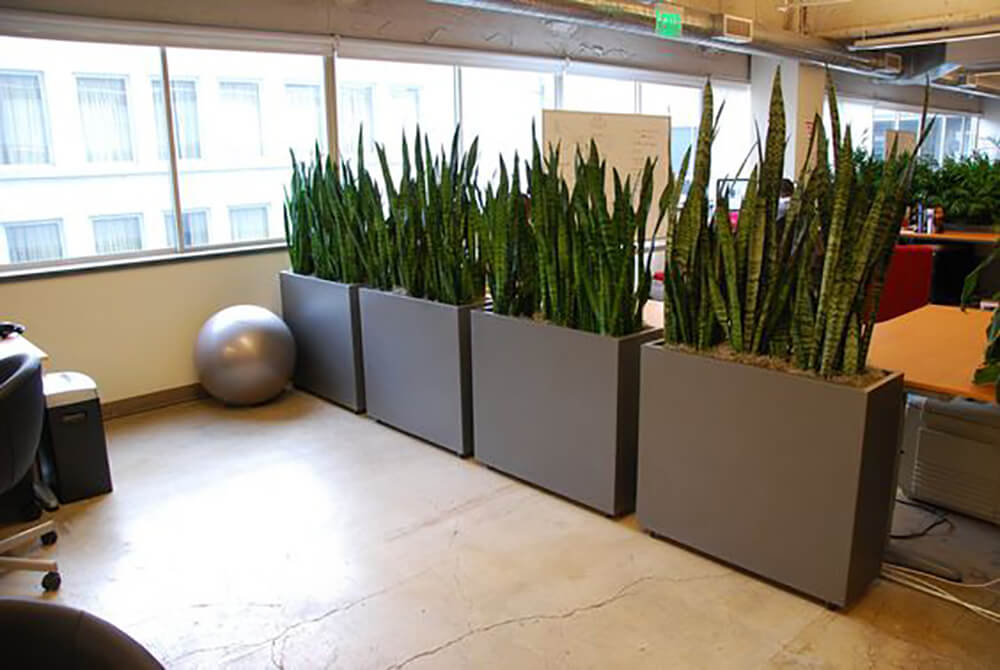
Tapering plant pots, like the Lima Tapered Square Planter, make the ideal dividers for smaller areas that require a symbolic divider rather than a physical one. For example, in waiting areas, one sometimes wants to create the illusion of privacy, even if it isn’t possible to create that privacy fully. This helps to make people more comfortable without taking up too much floor space.
Pot Design
The shape, color, and general design of the planter also have an impact on the effect that it has on the room. For instance, in a highly formal situation, you probably don’t want bright blue, red, and yellow planters as they may detract from the gravity of the rest of the room.
However, in a waiting room where you want people to feel calm and relaxed, and at home, you can either go for bolder, brighter colors to create an element of fun or neutral colors to create a peaceful environment.
You can also experiment with different shapes and designs. The sleek, square appearance of the Montroy Cube Square Planter Boxes will lend themselves well to a serious, formal setting. However, in something like an art gallery or other creative commercial spaces, you could try something more unusual, like the Spiral Distinctive Organic Planter Pot.
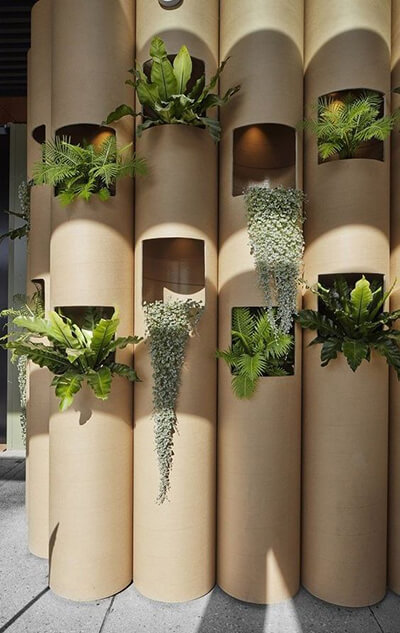
Photo Credit: CuteEscape on Pinterest
Tips for Using a Planter as a Room Divider
If you’re going to use a planter as a room divider, there are a range of things to consider. Here are a few tips from our experience to help you.
- First, remember that planters require drainage, which may sometimes result in wet floors. Plan watering times so that any leakage falls outside of your business’s peak hours.
- Consider both the height of the planter and that of the plant when setting up your room dividers. By layering plants of different heights, you can create a fuller effect and make the barrier denser.
- Try to position your planters in such a way that they serve your purpose while still giving the plants optimal lighting conditions.
- Consider adding some plants that have fragrant flowers, as this can help make the space more inviting.
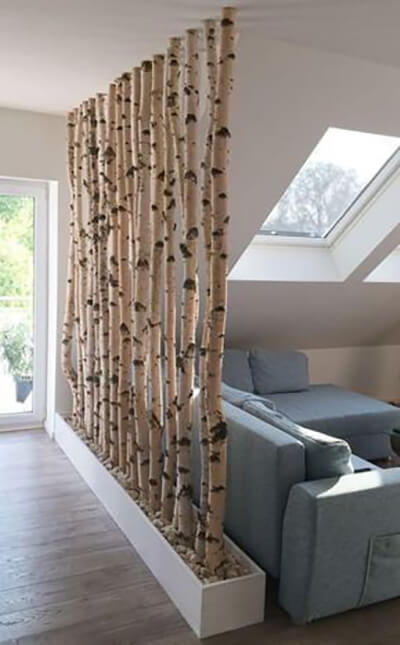
Photo Credit: Garden Patch on Pinterest
Some of the Best Plants to Use in a Commercial Space
There are so many different plants to choose from when you’re trying to decide what to put in your planter or room divider. Considering some of the different requirements that commercial spaces have, there are considerably fewer options that meet these requirements.
For instance, plants for commercial spaces need to:
- Be visually appealing - Naturally, any plant that you choose for a commercial space needs to contribute beneficially towards the aesthetics of the space. It’s important to choose plants that are nice to look at.
- Have low maintenance requirements - Few commercial spaces have the manpower or willingness to push a lot of time into the maintenance of their chosen plants. For this reason, any plants that you choose for your planter room divider must be low-maintenance.
- Not have high lighting requirements - Most commercial spaces aren’t planned for the introduction of plants. They have low lighting and generally don’t incorporate a lot of natural lighting. For this reason, any plant you choose needs to be suitable for indoor lighting conditions.
Bearing these requirements in mind, you might want to consider a few different plants. Our top five selections would include the following:
Snake Plants - Sanseveria sp.

ZZ Plants - Zamioculcas zamiifolia

Cast Iron Plants - Aspidistra elatior
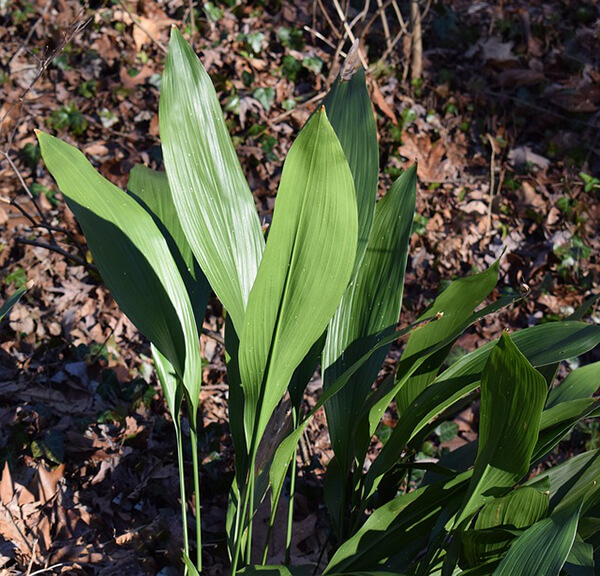
Spider Plants - Chlorophytum comosum

Dracaena spp
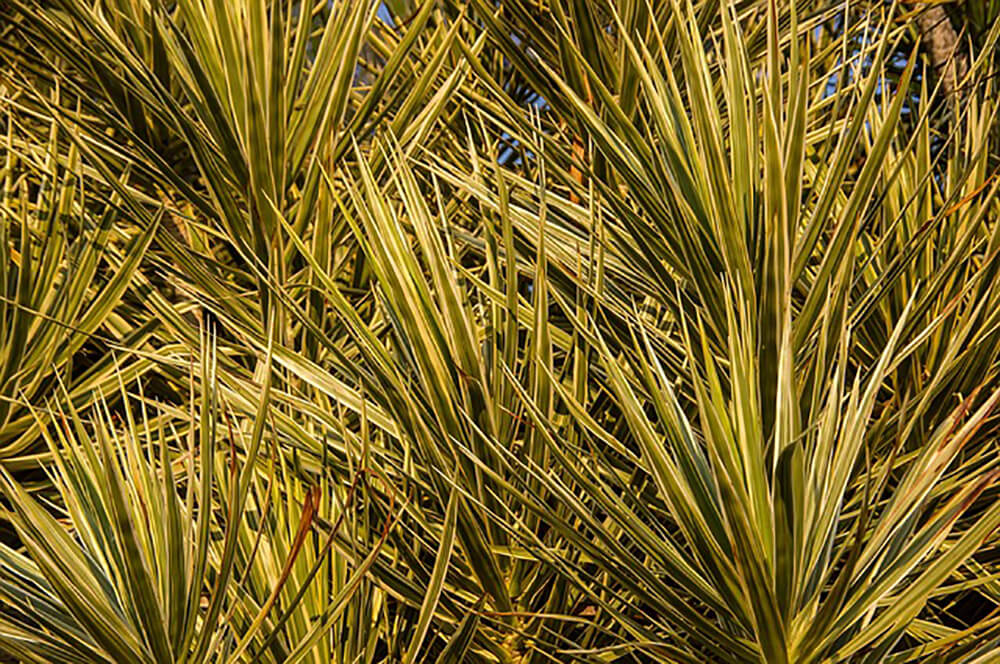
If you’re specifically looking for plants to use in an attempt to create more privacy, you may want to consider options like the Money Tree, Bamboo Palm, Parlor Palm, and some of the Ficus species. All of these plants are fairly tall, which helps to contribute to the feeling of privacy created by the planters.
Using Fake Plants
People often wonder whether they can use fake plants in a planter used as a room divider. While it is certainly possible, you won’t get all the benefits that real plants give you. However, there are certain situations where fake plants may be preferred. For instance:
- In busy commercial spaces, where there may not be time to tend to and maintain plants.
- In indoor spaces with low lighting, where live plants may not survive.
- High-traffic areas may not always be suitable for live plants.
In these instances, fake plants might be a good alternative to live plants. They’ll create a similar aesthetic to live plants in some ways. The disadvantages of this approach are that:
- Fake plants don’t act as air purification systems.
- Artificial plants don’t have the same effect on mental health and may not contribute to productivity in the same way.
- They won’t contribute as effectively to temperature regulation.
- Fake plants may enhance sound rather than absorb it.
If you bear both the advantages and disadvantages in mind and find that you can live with them, then artificial plants may be for you. They’ll still help you to create a sense of privacy, demarcate different areas, and change the appearance of the space. One unexpected advantage of artificial greenery is that you can easily wash it if needed.
Benefits of Using a Planter Room Divider in Your Space
There are many significant advantages to using a planter room divider in commercial spaces. Some of these may include the following:
- Enhanced Privacy
- Improved Air Quality
- Reduced Noise Levels
- Increased Aesthetics (1).
- Flexibility and Space Saving
- Improved Temperature Regulation
- Setting the Atmosphere
Conclusion
Using a planter as a room divider can be immensely successful. From large round pots to square pots, rectangular planters to tapering planters, the options are nearly limitless. Not only is this setup highly versatile, but you get many additional benefits as well.
So, if you’re ready to try a planter as a room divider in your commercial space, check out our range of commercial planters. We also have an entire range of office planters for this type of environment.
References


